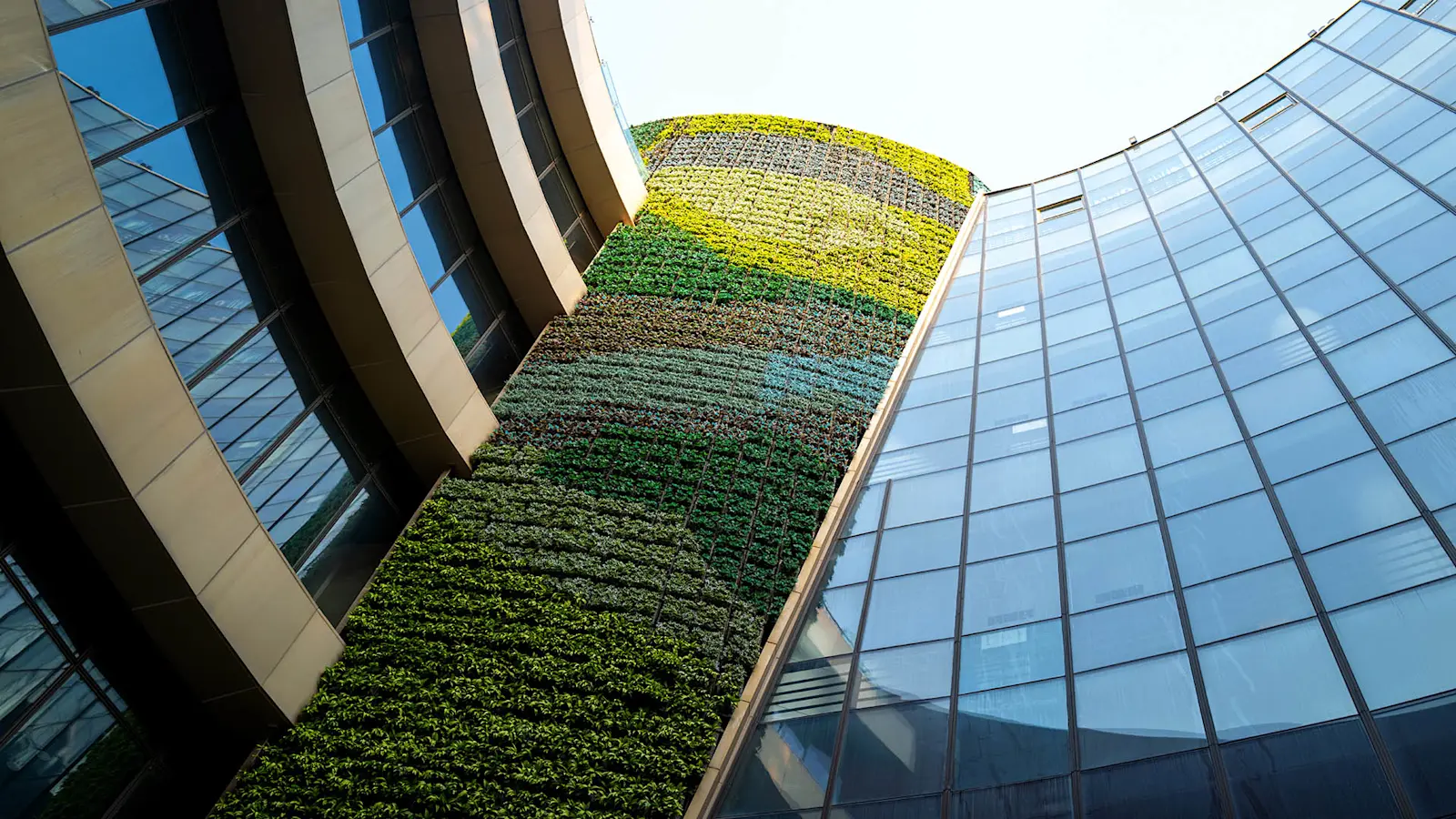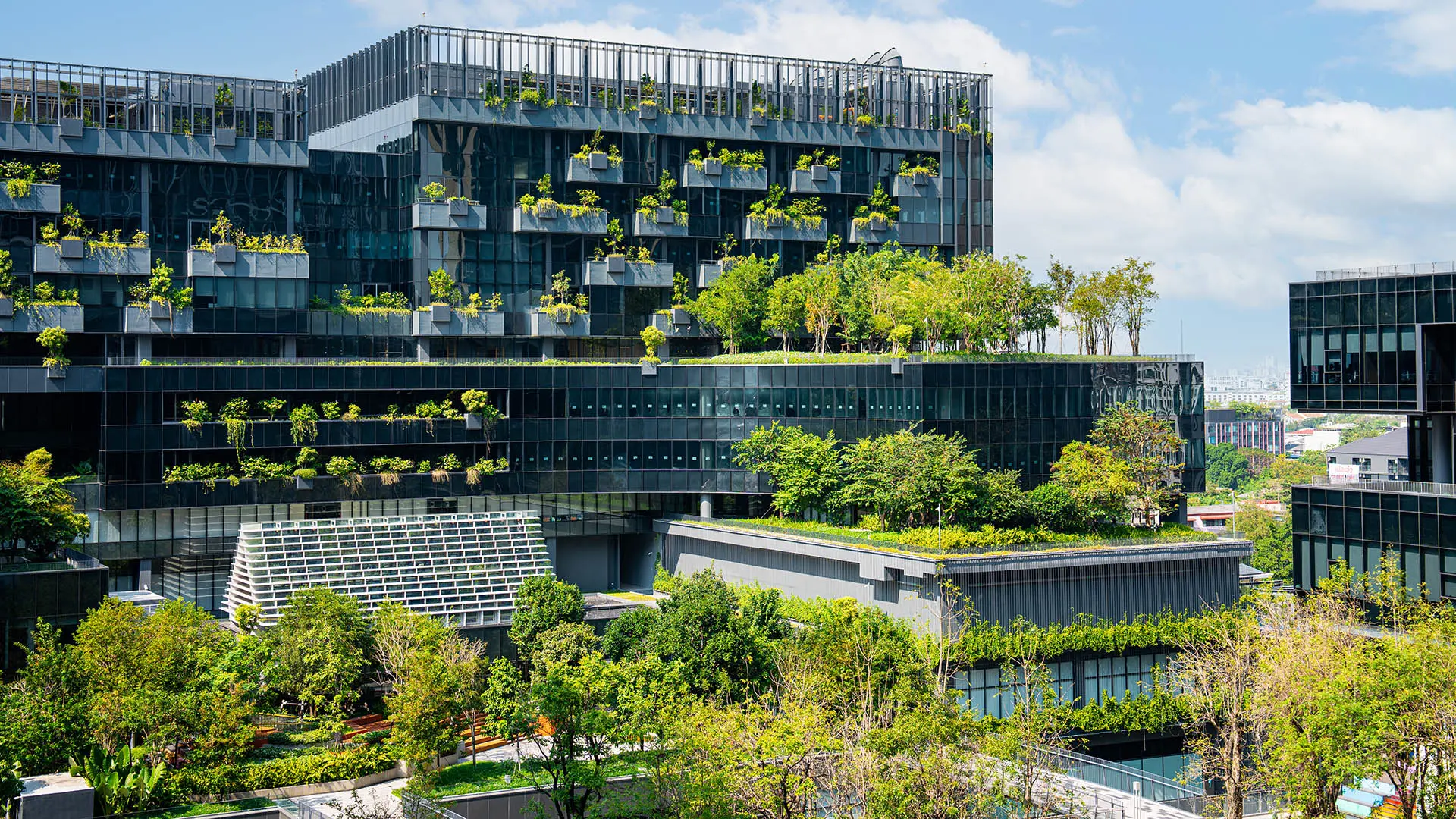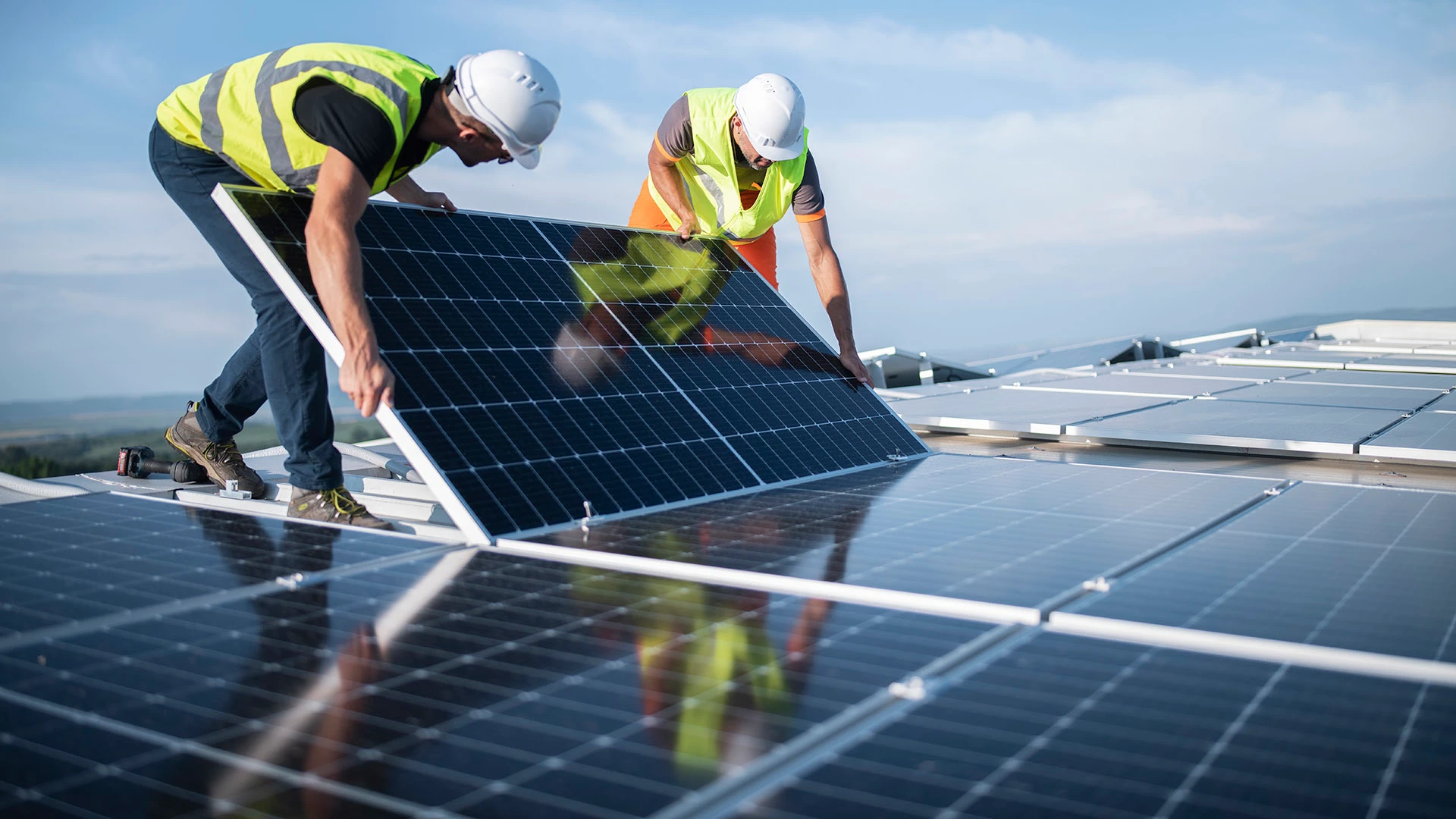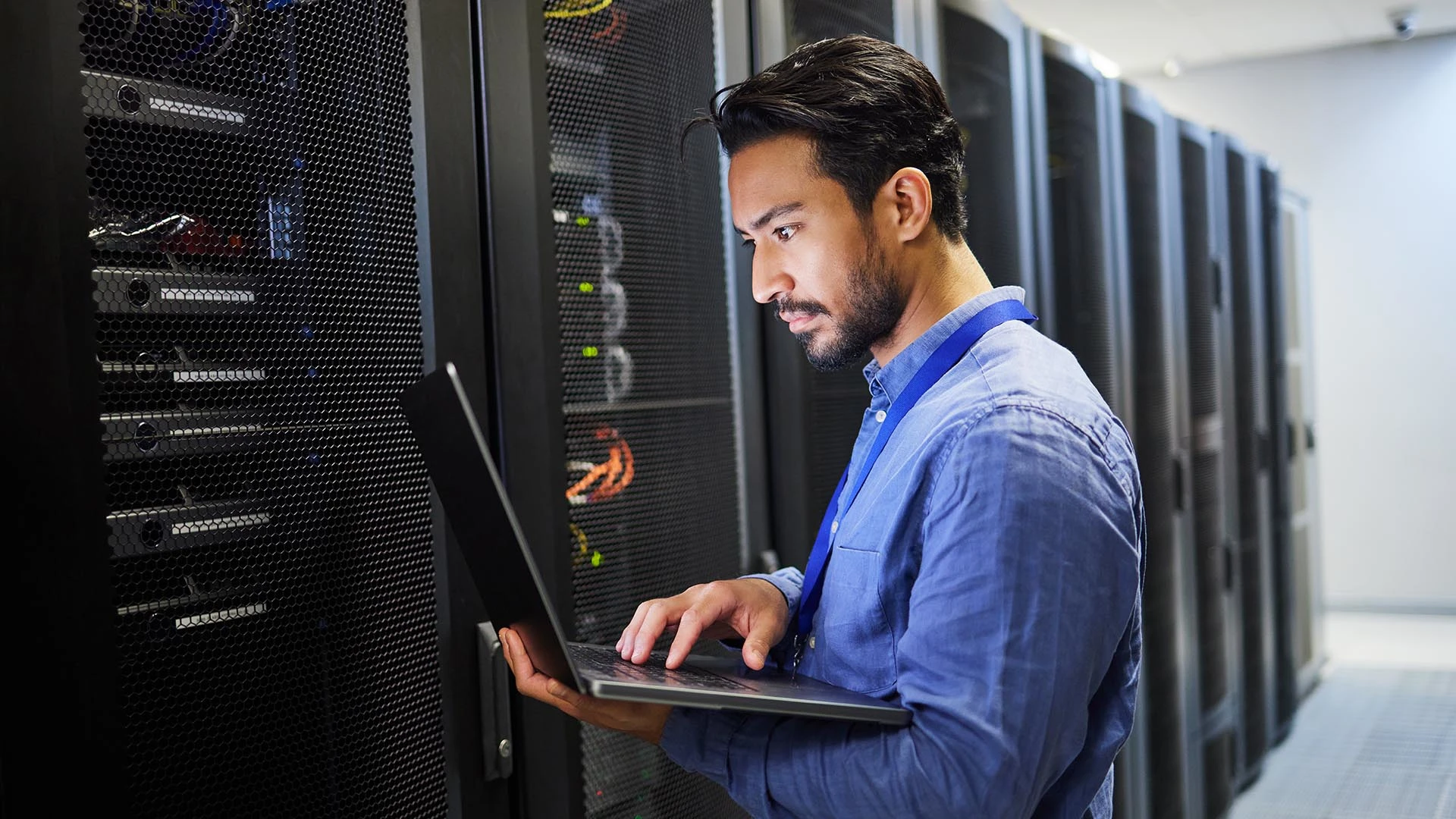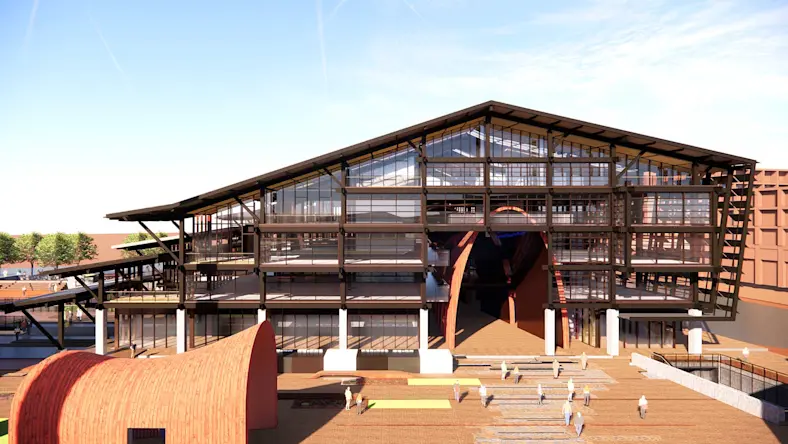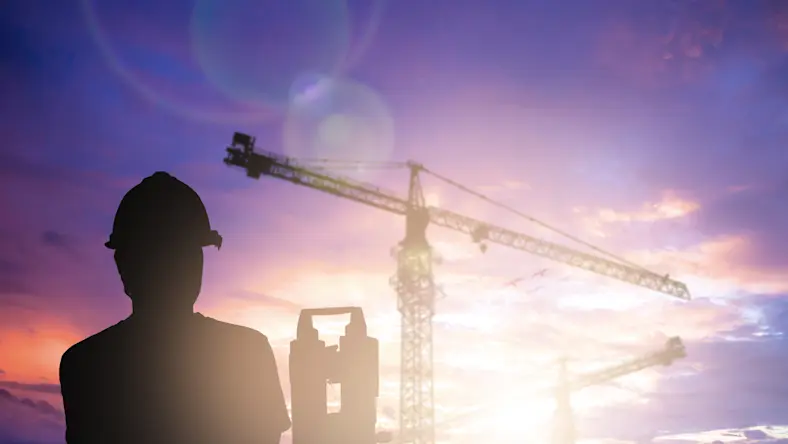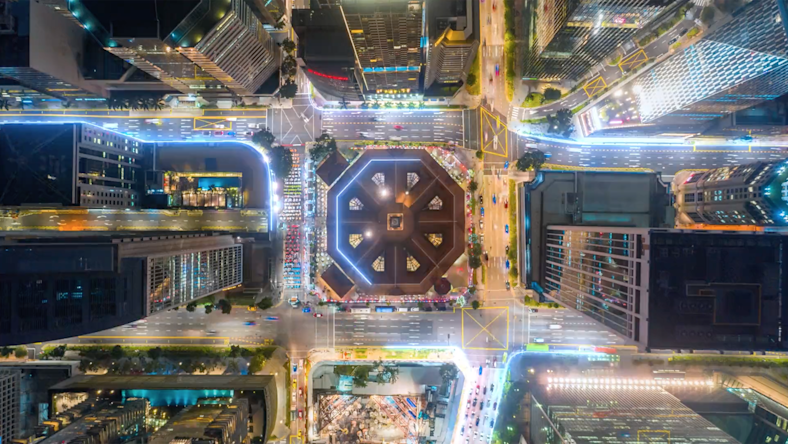& Construction

Integrated BIM tools, including Revit, AutoCAD, and Civil 3D
& Manufacturing

Professional CAD/CAM tools built on Inventor and AutoCAD
When it comes to experience, green building practitioners are far from green.
The global green buildings market surpassed $0.5 trillion in 2023 and could more than double—topping $1T—in the coming decade, fueled by the worldwide sprint to achieve net zero by 2050.
The industry’s propulsive growth is a necessary step: Globally, the built environment is responsible for roughly 42% of energy consumption, according to Architecture 2030. It’s also a major culprit of environmental degradation, energy use, resource depletion, and air pollution.
To counter these effects, the goal of green building is to produce structures that are environmentally responsible and resource-efficient throughout their entire lifecycle. The benefits are myriad and massive, from bigger cost savings and smaller carbon footprints to healthier, more enticing environments for people, flora, and fauna.
Green building technologies play a vital role in creating a more sustainable built environment. The outlook is optimistic: More than 500 green-building professionals surveyed for the U.S. Green Building Council’s (USGBC) 2023 Green Building Trends and Sentiments report are, on the whole, very confident in the industry’s ability to positively impact climate change.
According to Dodge Data & Analytics’ latest World Green Building Trends report, published in 2021, the top applications for emergent and evolving green building technologies include creating net-zero or net-positive buildings, controlling embodied carbon, enabling resilient and passive design, and using artificial intelligence (AI) and machine learning to streamline processes and construct smart buildings.
Green buildings, also called sustainable or high-performance buildings, are designed to reduce the overall impact of the built world on human, plant, and animal health, as well as climate change. These structures span many spaces and sectors, and activity is especially high in new commercial and institutional construction, along with retrofits and renovations of existing structures, according to Dodge’s report (PDF, p. 10).
Per Dodge, a building project must feature each of the following to be considered green (p. 75):
Efficient use of resources like energy and water
Measures to reduce pollution and waste, plus promote reuse and recycling
Good indoor environmental air quality
Consideration of the environment in design, construction, and operation
Additionally, it should incorporate as many of the following technologies and practices as possible:
Use of renewable energy, along with materials that are nontoxic, ethical, and sustainable
Consideration of occupants’ quality of life in design, construction, and operation
A design that can adapt to a changing environment
A commitment to net-zero carbon emissions
As for measuring the success of a green-building project, “energy efficiency is a crucial factor,” according to USGBC’s research, with 77% of respondents citing it as a top indicator. Other markers of success include:
Achieving green building certification (69%)
Improved occupant satisfaction (53%)
Improved indoor air quality (52%)
Water use reduction (48%)
While certain green building practices, such as using local and renewable materials, date back millennia, the modern movement began in the 1960s and 1970s, when environmental awareness—and oil prices—were on the rise. As concerns about pollution, resource depletion, and environmental degradation began to take root, so did interest in sustainable development.
The 1980s and 1990s saw this early energy crystallize into standards and certification programs. Chief among them: the Leadership in Energy and Environmental Design (LEED), which USGBC launched in 1998. LEED established criteria for green building design, construction, and operation, along with a framework for evaluating a structure’s sustainability. To this day, LEED remains the world’s most sweeping green building rating system, covering 197,000 projects in 186 countries and territories. Other major programs include BREEAM, Green Star, and WELL Building Standard.
Apart from the environmental and regulatory imperatives to go green, the practice also promises big wins for architecture, engineering, construction, and operations (AECO) professionals on business and social fronts.
According to The Sustainabilist’s research synthesis, green buildings cost 14% less to operate than their traditional counterparts, and, because they consume 25%–35% less energy, upfront investments can be recouped in as little as three to five years, compared to historic estimates of 15 to 20 years.
Indeed, participants in Dodge’s research saw mean savings of 10.5% in the first 12 months of operating a green building and 16.9% over the next five years. Financial benefits were even higher among practitioners who deal in mostly green projects (p. 5).
Beyond the cost savings, green investments also bode well for a building’s differentiated, long-term value: According to Dodge’s findings, “well over 90% of owners, investors, architects, and engineers have consistently reported the belief that their new green buildings have higher asset values than traditional buildings” (p. 27), and owners and investors report 9% growth in a building’s value from investments in new-build and renovation green projects (p. 5).
The environmental benefits of going green are numerous, from reduced energy consumption, greenhouse gas emissions, and water consumption to improved indoor air quality and better conservation of natural resources. Compared to conventional buildings, green buildings have 14% lower impact on the environment and emit 18%–85% less greenhouse gas, according to The Sustainabilist’s analysis.
The environment isn’t the only beneficiary. Human health—including improved building occupant well-being—is another leading driver of green building, according to USGBC’s and Dodge’s research.
In the United States, for example, where people spend about 90% of their time indoors, concentrations of some pollutants are two to five times higher inside than outside, according to the U.S. Environmental Protection Agency. The coronavirus pandemic has only underscored—and intensified—such realities.
Aside from bodily health, the quality of indoor spaces can impact many dimensions of well-being, with productivity, sense of community, and the domestic economy ranking chief among the social incentives to go green, according to Dodge’s research (p. 4).
Enthusiasm for going green is especially high in Australia, New Zealand, Canada, and the United States and is expected to grow significantly in Brazil, Colombia, Canada, and Mexico, according to Dodge’s report. Emerging applications for green building construction technology will only increase this momentum:
Buildings with such designations completely offset (net-zero) their level of impact in one or more resource areas, such as water, energy, carbon, or waste. As an example, zero-energy buildings might feature ultraefficient heating, ventilation, and air-conditioning (HVAC) systems that use AI and machine learning technology to predict and proactively manage building performance as conditions change.
Water-neutral or net-zero water buildings use advanced conservation systems to reduce water usage through features such as:
Low-flow plumbing fixtures (for example, toilets, faucets, and showerheads)
Gray-water systems that recycle water from sinks, showers, and laundry machines for nonpotable uses such as irrigation or toilet flushing
Rainwater harvesting systems that capture and store rainwater for reuse (such as in irrigation or toilet flushing)
Water-efficient landscaping featuring drought-resistant plants and efficient irrigation systems
Smart water technologies that ensure quality, reduce leaks and wasted water, and optimize energy usage by harnessing AI and machine learning
Embodied carbon, a growing focus of decarbonization efforts for AECO professionals, refers to the greenhouse gas emissions created from the extraction, manufacturing, transportation, installation, maintenance, and disposal of building materials. Unlike operational emissions, which accumulate over a building’s lifetime, embodied carbon is fast-acting and front-loaded: Between 2020 and 2050, it will produce half of all greenhouse gas emissions from new buildings (Dodge, p. 37). In Dodge’s research, most respondents (72%) are familiar with the concept of embodied carbon, and 34% are already tracking it in some projects. Of those monitoring their emissions, two-thirds are also seeking to reduce them. “The top factors that will drive more engagement with dealing with embodied carbon are more information about how to reduce it and more building products/materials on offer that can help to do so,” researchers say (p. 6).
Autodesk offers several tools and integrations to help professionals reduce embodied carbon in construction, including the Forma Embodied Carbon Analysis (currently in tech preview) for early lifecycle analysis, Carbon Insights for Revit-based carbon impact analysis, and the EC3 tool for material comparisons. Additionally, tallyCAT (currently in beta) and tallyLCA provide real-time and cross-category lifecycle assessments within Revit, while One Click LCA facilitates whole-life-carbon calculations using global databases.
Incorporating green building technologies that generate electricity or heat from renewable sources can reduce a building’s reliance on fossil fuels and shrink its carbon footprint. Financial incentives, such as a 30% subsidy for the adoption of renewable technologies, sweeten the appeal of these innovations, according to recent research in the Environmental Chemistry Letters (ECL) journal.
Some common examples of renewable energy sources that may be integrated into designs include:
Geothermal energy: Geothermal systems, which use heat from the Earth to heat and cool a building, can be more energy-efficient and have a smaller carbon footprint than traditional HVAC systems.
Solar energy: Photovoltaic (PV) panels can be installed on the roof or walls of a building to generate electricity from the sun’s energy—with increasingly aesthetic options—while solar thermal systems can be used to heat water or spaces.
Wind energy: Turbines can be installed on the roof or a separate structure to generate electricity—from typhoon-level winds in some cases—and fulfill about 15% of a building’s energy requirements, according to the ECL article.
Smart buildings curb steep climate costs by using advanced technologies to connect, analyze, optimize, and automate key elements of performance.
For example, if the sun is blazing on a hot August afternoon, a smart system might adjust shutters and air conditioning on both sides of an office building to maintain comfort and minimize cost. If some rooms are full of people while others sit empty, the system might sense the disparity and make appropriate tweaks.
Research suggests that implementing such smart technologies can reduce the average office’s whole-building energy use by 18% and, in some cases, produce savings as high as 70% over three years.
To do it, a central “brain” uses advanced technologies including the Internet of Things (IoT), machine learning and AI, data analytics, and building information modeling (BIM) to integrate and streamline building capabilities ranging from HVAC, electrical, water, and elevator systems to the way tenants receive services and interact with their surroundings.
Sensors that “talk” to each other through the IoT give building managers and occupants actionable data on everything from footfall and occupancy levels to indoor air quality, climate, and even viral risk. In many cases, these settings can be manually or automatically adjusted based on conditions or preferences. Advanced analytics, including BIM data, offer deeper visibility into the life functions of a building—such as when things are fixed, tasks completed, and traffic afoot—to respond in real time.
As buildings get smarter, machine learning and AI will become increasingly important throughout their lifecycles. Predictive maintenance, for example, will flag high-traffic building areas or potential issues within machinery and supply cables, so facilities managers can schedule preventive maintenance, avoid disruptive breakdowns, and extend the lifespan of critical equipment. Advanced analytics will transform data from sensors into insights on building performance, occupant behavior, and potential areas for improvement and sharper decision-making.
Aside from net-new infrastructure, older buildings are increasingly being retrofitted with smart systems and other green building technologies, such as energy-efficient upgrades to HVAC systems, lighting, and appliances; new water conservation measures; and the addition of green roofs and walls, rainwater harvesting systems, and solar panels.
This focus on existing buildings is a critical element of decarbonization because modern commercial structures are designed to last for five decades or longer before requiring extensive maintenance or preservation. Renovations and retrofits also have a big payoff for AECO professionals: Participants in Dodge’s research save 11.5% in the first 12 months and 17% within the next five years of a project (p. 28).
Another alternative to demolishing and rebuilding from scratch, adaptive reuse is the process of repurposing an old or unused structure and adapting it for a new or contemporary use.
The embodied carbon associated with a renovation and reuse project is typically 50% to 75% less than new construction, making for a more sustainable and often less costly and time-consuming project. Experts predict that 90% of real-estate development in the next decade will focus on renovating and reusing existing structures.
Adaptive reuse has additional socioeconomic benefits, including reducing urban sprawl and revitalizing communities through creatively repurposing old or unused structures into local highlights that address particular needs (for example, affordable housing, cultural spaces, student accommodation). In the case of historic buildings, adaptive reuse also helps to maintain cultural heritage by preserving local character and culturally significant sites.
Autodesk’s Revit software facilitates and promotes adaptive reuse initiatives by streamlining project management and portraying more accurate models.
Lack of budget, resistance from shareholders, and insufficient government support or incentives are among the top barriers AECO professionals face when pursuing a green project, according to USGBC’s research.
Although cost surfaced as the top barrier globally in Dodge’s report, perspectives are evolving among some groups as they realize the long-term benefits of going green. Investors, for example, are “less concerned” about spend than other industry groups, and even cost-conscious owners see the business case for going green (p. 18).
When it comes to smart building projects, some hesitation may stem from limited knowledge of available technologies. Similarly, occupants and project partners may be put off if they encounter new tech that seems intimidating or unapproachable, according to CABA’s Intelligent Building Council. Here again, education is crucial to ensure everyone is on the same page when it comes to smart technologies, strategies, and value. “An improved adoption practice is directly linked to an increase in perceived benefits,” the Council states (PDF, p. 52).
With the rise of increasingly smart green buildings, concerns inevitably surface about cybersecurity, data privacy, and overall compatibility between new and existing systems. To guard against cyber threats and protect personally identifiable information, facilities managers should partner with experts to shore up networks and ensure occupants are trained in individual security best practices.
The most critical systems to safeguard include surveillance cameras, access control systems, smart meters, and location tracking tools, says Buildings magazine. Data protections should center strict controls over collection, encryption, and storage; consent forms for tenants; and third-party security audits.
Pressure is mounting to implement sustainable practices at scale. In response to the United Nations’ 2015 adoption of Sustainable Development Goals, countries around the world have developed national strategies and policies to promote green buildings and sustainable construction practices, supported by international organizations such as the International Energy Agency (IEA) and World Green Building Council.
Other notable regulatory moves include California’s Climate Corporate Data Accountability Act, signed into law this September, which requires US companies doing business in the state to disclose greenhouse gas emissions and related climate financial risk information; the European Union’s 2023 directive on corporate sustainability reporting, which strengthens company reporting expectations beginning this year; and the Energy Performance of Buildings Directive, which aims to achieve a fully decarbonized building stock by 2050.
Although such efforts are energizing, keeping pace with an ambitious, ever-evolving compliance landscape can be daunting. Indeed, the building sector is lagging on the path to net zero by 2050, according to the IEA, though China, Japan, the EU, and the United States have made “notable” recent strides in decarbonization. To regain ground, AECO professionals would like to see even more rigor, support, and incentives from regulators, according to USGBC’s research.
To facilitate decarbonization, for example, participants in the research are most interested in stronger energy codes, mandatory performance standards and energy benchmarking (such as building grades), and financial incentives for expansive energy retrofits and net-zero emissions. “These results demonstrate a strong desire to promote high-efficiency, low-carbon buildings across the industry and to elevate standards overall,” USGBC’s report states.
The good news? Sweeping laws such as the Inflation Reduction Act should help in the long term. Easier payment mechanisms mean “many of the tax incentives encouraging green building are not only more generous but also much more accessible to public and nonprofit entities,” the USGBC researchers say.
Given the growing imperatives, incentives, and benefits of green building, AECO professionals interested in incorporating the latest technologies into their projects should prioritize passive design principles and energy-efficient equipment to build toward decarbonization, according to USGBC’s research (p. 2). Respondents also recommend selecting healthy, durable, and low-maintenance materials and supporting equity in the built environment through green-building certifications.
Right now, buildings contribute significantly to climate change, but that doesn’t have to be the case going forward.
The path to a more sustainable future lies in the AECO industry’s unwavering commitment to innovation, collaboration, and adaptation. Green building technologies are rapidly evolving, and their continued refinement will be instrumental in shaping the future of the built environment.
Achieving net-zero emissions is not just an aspirational goal but a vital necessity. By embracing emergent technologies and practices, the industry can create green buildings that meet the needs not only of today but also of future generations.
This article has been updated. It originally published June 2022. Susan Kuchinskas contributed.
Delaney Rebernik is a writer, editor, and communications strategist for purpose-driven organizations. She lives in Brooklyn, New York, with her husband Todd and dog Spud, who’s named after her favorite food.
AECO
Image courtesy of China Construction First Division Group Huajiang Construction Co. Ltd.
AECO
Emerging Tech
